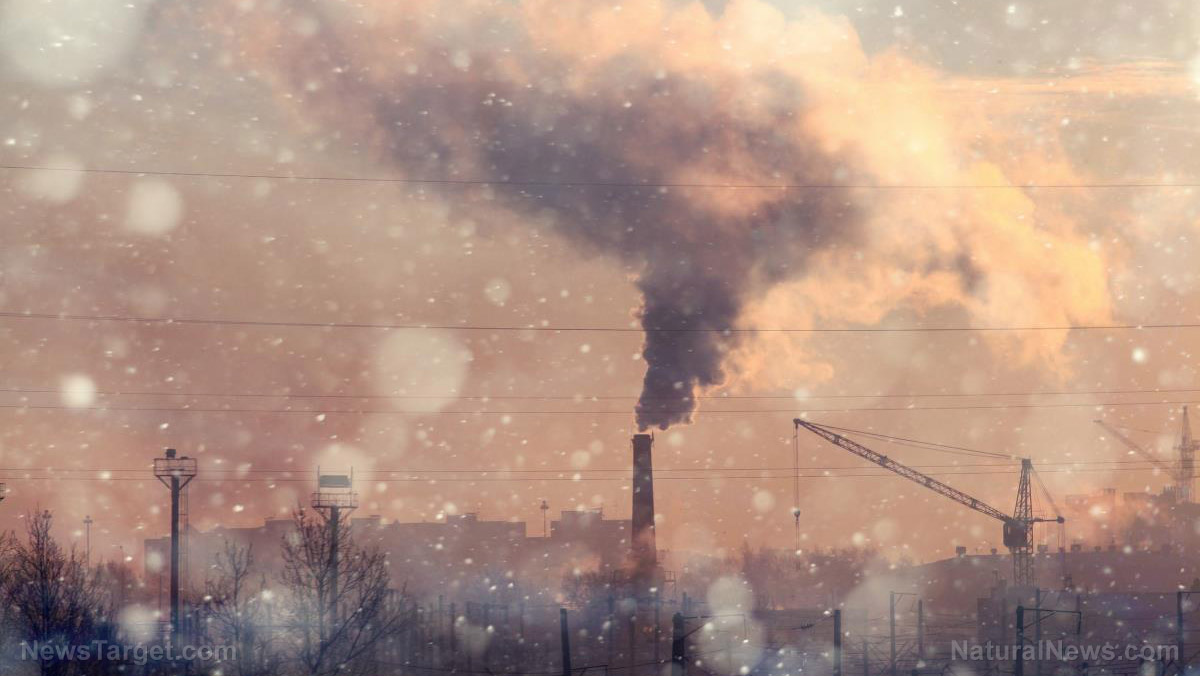Technical solutions for pulling pollution out of the air are distractions that allow both government and industry to keep polluting
02/19/2018 / By Frances Bloomfield

The global air pollution situation has peaked, causing millions to succumb respiratory issues and other health problems. Various countries have attempted to tackle this worldwide epidemic through all kinds of creative means. In Xi’an, China, a tower the size of a small high-rise is said to purify the air around it. In London, a group has proposed coating the city in a paint that consumes nitrogen oxides (NOx). In New Delhi, India, the government has turned to water mist cannons to clean up smog. Unorthodox and seemingly clever solutions all, but are they little more than handy distractions from the bigger picture?
It certainly appears to be the case. Take the NOx-eating paint for instance. The researchers themselves admitted that covering the entirety of London in their paint would barely affect the NOx concentrations in the air. Although the chemistry behind their paint was reasonable, they stated that a mere sliver of the city’s atmosphere would come into contact with the paint. This wouldn’t be enough to yield any beneficial effects.
Similarly, in China, the impact of the air-filtering tower will be minimal at best. Even with its proactive approach of utilizing greenhouses to suck in air pollution and pass it through multiple air filters. This would work in a small city within a sealed box where the flow of smog was intermittent. That isn’t the case for an open city like Xi’an, which has an area of 10,097,000 m (or 10,097 km). Pretty much the only ones who’d be able to benefit from the tower would be those downwind of it. (Related: Pollution explodes in China; government begins forcing businesses to close their doors in desperate bid to stop deadly smog.)

As Alastair Lewis, a professor of atmospheric chemistry at the National Centre for Atmospheric Science, explained it, the air we breathe goes much further up than we realize. From the surface of the ground to the planetary boundary layer, you have a good stretch of 1000 m (or one km). This means that larger volumes of air would need to be cleaned if any notable changes are to be achieved.
Meanwhile, government officials and industry heads are free to do as they please as the rest of us are preoccupied with these so-called innovations. Some may even go so far as to turn these technologies in their favor so that we can be led to believe that change is happening. We know this because, according to Reuters.com, that’s what two Chinese officials tried to do. Officials in Xinyu, Jiangxi and Xinyang, Henan were caught attempting to reduce emission readings by spraying air quality sensors with water. These officials were said to have been dismissed or given “administrative” punishments, as per the Ministry of Environmental Protection.
Far from this being a first-time occurrence, this is the second time that Henan officials have come under fire for tampering with emission data. Moreover, Xi’an itself is no stranger to this sort of controversy. Local environmental officials have doled out punishments as well after it was discovered that they were removing surveillance tapes and stuffing cotton into air quality sensors.
In the meantime, China’s smog situation has worsened in a number of the nation’s major regions and cities. The Yangtze River Delta region, Pearl River Delta region, Xi’an, Guangzhou, and all of China had particle pollution that only grew compared to last year’s measurements. This is despite the country’s overly ambitious, years-long war on pollution.
It’s more than likely that the same is occurring elsewhere around the world. But we don’t know about it yet because we’re too busy celebrating technologies that don’t do much to sort the problem. Comfort us, yes; fix the problems they were supposed to solve, not so much.
Go to Environ.news to remain updated on any news about global air pollution.
Sources include:
Submit a correction >>
Tagged Under:
This article may contain statements that reflect the opinion of the author





















